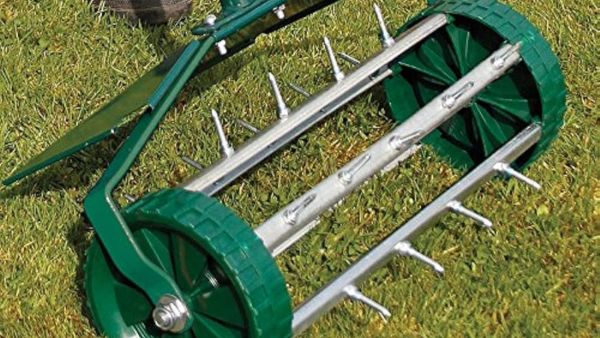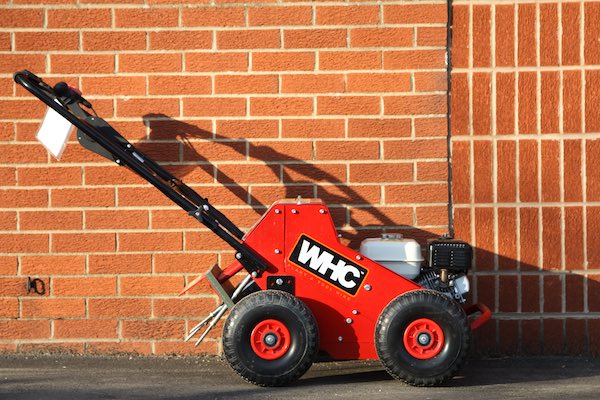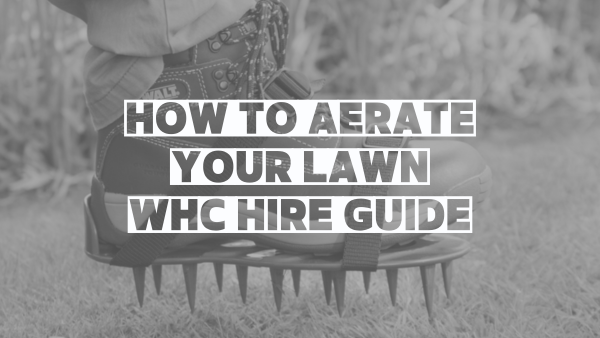How to Aerate Your Lawn? WHC Guide
You may have heard of aerating your lawn but understanding what it is all about and the reasons behind it all, could be completely alien to you. If this is the case, then we have all the answers you need in this guide on how to aerate your lawn. The topics we are going to cover during this guide are:
- What is lawn aeration?
- Why should you aerate your lawn?
- When to aerate your lawn?
- What tools you can use to aerate your lawn?
By the end of this guide, you will have all the information you need to get out there and aerate your lawn at home if you wish to do so. Let’s get started…
What is lawn aeration?
Lawn aeration is the process in which you increase your lawns overall ability to breathe, absorb more nutrients and allow water to penetrate deep into the soil bed. Aerating is a vital process of keeping a healthy, lush lawn throughout the growing season. It’s also described as a procedure in which holes are inserted into the garden surface to increase airflow between grassroots. Aerating your lawn also assists in the breakup of layers of thatch that can build up over time within your grass blades.
Why should you aerate your lawn?
Soil compaction kills lawns. It turns them into a mossy, dusty, weedy mess. Therefore, to avoid any horrendous issues, regular aeration needs to take place. The more compaction that the surface undergoes, the more often you should aerate your lawn. Good drainage conditions and adequate topsoil air intake also aid in producing healthy lawns. Air and water are required for microorganisms, which help break down layers of thatch within your lawn. By aerating your lawn, you are encouraging the growth of healthy, deep-rooted grass.
When should you aerate your lawn?
As previously mentioned, you need to aerate your lawn based on its usage and the amount of stress of compaction your soil is under. Another factor to consider is the soil type that your lawn sits on. Below is a table describing how frequently you should aerate your lawn:
| Soil Type | Aerate |
| Clay | Annually |
| Sandy | Annually/ Rainfall Dependant |
| Silty | Annually |
| Peaty | Annually |
| Chalky | Annually |
| Loamy | Annually |
Choosing the best time during the year to aerate your lawn can be difficult depending on your circumstances and the amount of compaction and thatch build-up that you encounter. The best way to see if your lawn requires aeration is to insert a screwdriver (any type) into the surface of the lawn. You should not have to apply much force for it to pierce the surface. If you have to apply lots of pressure because the ground is too hard, then your surface requires urgent help.
In most situations, all lawns should be aerated annually, with the most popular time being Autumn to do so. This is because outside temperatures are still warm, encouraging new growth, however, just at a slower rate compared to springtime. Aerating your lawn in Autumn will prepare it for the long winter ahead. In addition, this will ensure that your grass is in the best possible condition to grow in the following year. Besides annual treatment, there are some very common observations to look out for just in case your lawn requires aerating more than once a year.
A Thick Thatch Layer
Lawn thatch is a build-up of dead grass blades, moss and other organic matter in between the grass pile. Without regular treatment of removing thatch from your grass, it can cause devastating issues with your lawn. Effectively, the thatch stops any absorption of water and sunlight from getting to the roots of the grass blades. In short… smothering your lawn to death.
Lawn Disease
If your lawn is far too compact, then it is far more susceptible to disease. Most lawn diseases are fungal and can be treated with regular maintenance and care. By aerating your lawn, you can allow the soil bed to breathe and circulate properly, which in time, will help prevent and manage any lawn disease. Lawn diseases can be noticed by a change in your lawn’s pile or by discolouration.
Grass Colour
Compacted lawns eventually turn dry and brittle. This can eventually lead to a very patchy, uneven lawn overall. Therefore, if you notice that your lawn is turning a pale/straw-like colour, there is a problem.
Poor Moisture Holding
Lawns that have poor moisture holding, dry much quicker and do not absorb as much water. This can be affected by which type of soil your lawn is laid on. Although often this can be because of the levels of compaction. Keep a keen eye open, especially when it has just rained for any runoff that may occur.
What tools can you use to aerate your lawn?
There are several designs of aerators that are available on the market, all of which are straightforward to use. However, depending on the size of your lawn could determine which method you decide to choose.
Aerator Spiked Shoes

Aerator spiked shoes are simple attachments that can make a huge difference to a lawn. These handy tools strap onto the bottom of your existing show soles and require bodyweight to work.
Pros
- Cheap
- Easy to use and store
- Ideal for small lawn spaces
Cons
- Requires a lot of effort, especially on larger lawns
- Can cause foot pain after a long time
- May not be suitable for less able people
Aerating fork

An aerating fork is very similar to a normal garden fork. Again, this method requires body weight and is quite labour intensive. Some designs of aerating forks come with hollow times which are excellent to remove cores from your soil.
Pros
- Cheap and easy to store
- Effective in creating hollow cores in your soil
- Lightweight
Cons
- Very labour intensive
- Not suitable for large lawns
- Hollow time can get clogged with mud during usage.
Spiked Roller Aerators

These manual rolling tools are low cost and simple to operate. An operator has to simply push the roller along the lawn surface for it to work. It makes lightweight of larger lawn spaces.
Pros
- Cheap
- Easy to use
- Lightweight
- Not labour intensive
Cons
- Its lack of weight can cause problems with penetrating more compact lawns.
- Cheaper models can be flimsy and can break easily.
- Manual pushing down on the handle may be required.
Petrol Lawn Aerator

Petrol lawn aerators are a great choice for any size of lawn. They require minimal labour from the operator and are effective in removing thatch at the same time.
Pros
- Simple and easy to use
- Adjustable depths
- No manual labour required to operate
- Powerful enough to penetrate the most compact lawns
- Ideal for any size of lawn
- Requires no electricity to operate
Cons
- Expensive to purchase, however relatively cheap to hire.
- Heavy piece of machinery
- Can be tricky to navigate around small lawns
- Over usage can cause damage to your lawn
Looking to prepare your lawn for the Winter? At WHC Hire Services, we have been supplying specialist tools to trade and the general public for over 20 years. With regular investments into the quality of our tools and equipment, we are able to provide what we consider to be the best equipment on the market to date at affordable prices. With Autumn gardening tool equipment available from depots in Tewkesbury, Worcester and Chipping Norton, you can get your hands on the right tools to get the job done.
Click the link below to view the tools and equipment we have on offer to prepare your garden for winter this year.

